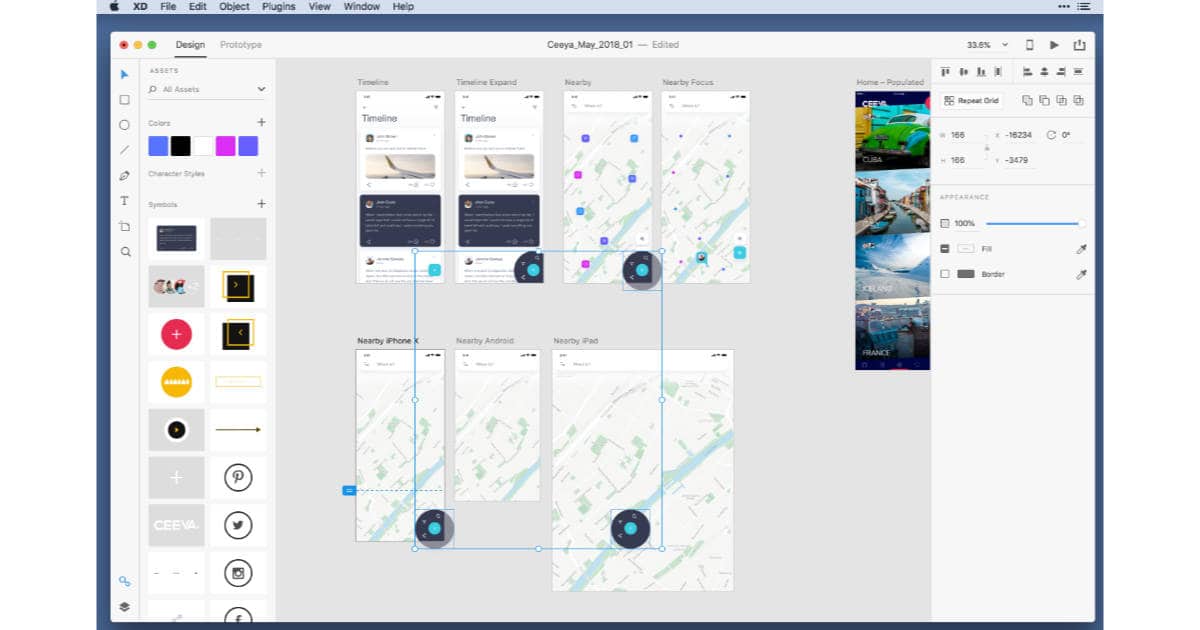

You will find various layouts optimized for fast scanning. If you’re thinking about what layout to choose for your landing page, take a look at the Piotr Kaźmierczak’s website wireframe examples listed below.

Visitors should be able to get a general idea about the product/service in just a few seconds. Landing page design should always be optimized for fast scanning. Each screen helps users find all the required information at a glance. It’s easy to see that crucial information in Ryszard Cz’s app wireframe examples is visually prioritized. Simplicity and transparency of information are two key characteristics of good design for people who are thinking about investing their money. Each item in the grid contains essential information about the product-product image, name, and price. The products are distributed in an easy-to-scan grid. You can also notice that this sample has an excellent visual hierarchy. It’s easy to understand how the filtering will work just by looking at this wireframe. The wireframe listed below features a few essential areas-filters, relevant products, and sorting. Michał Nowakowski shared an excellent collection of website wireframe examples for eCommerce. You will also find a helpful collection of wireframe kits that you can try in your next project. In this article, we’ll share an excellent collection of inspiring, must-see wireframe examples for websites and mobile apps then give you a little more background on wireframes and how they’re used in application and web design tools. Wireframing is a step that should not be skipped.

It serves as a reference point for functional specifications and gives the product team a basis to begin creating screens. A wireframe is like an architectural blueprint in the design process. And the first step of creating this appearance is creating blueprints-outlines of areas that give those involved in building a clear vision of the project structure. When we think about building a home, we usually mean the process of construction. This blogging is for the writers.The process of creating a digital product is similar to the process of building a house. Following the steps I’ve detailed here will help ensure you’re set up for success - and a fast development stage - in Webflow. The final stage of this process is, of course, bringing all my XD work over to Webflow. This last step is optional, but helps maintain that one-to-one relationship between mockups and site that I mentioned before, and it’s great for illustrating things for clients, if needed. In this final stage, I start applying XD’s prototyping toolset to link pages, add transitions and states, and polish the design preview before I bring it to life in Webflow. The best part? This helps you model the sorts of designs you’ll create in Webflow using Collection Lists. This workflow has saved my marriage - true story - because now that I don’t have to repeat elements over and over again, I have time to go on dates. Which is why it’s so great to take something like a grid of repeating layers of images and just duplicate it - over and over and over. It will save you that much time.ĭesign is all about repetition. This will add all your colors and/or text styles to the asset panel, making it much simpler to apply them across your design.ĥ25,600 minutes in a year.
#Adobe xd tutorial prototype full
Next, select a color or character style (or, an artboard full of either), open the assets panel, and click the plus sign beside the corresponding asset type. I add my logo, colors, icons, and headings, levels one through six. When I start any project, I build a moodboard as a basis for my design system.

Once I’ve designed all these, I save them to XD’s Assets UI. This allows me to think about the foundation I want to build my site on. Symbols (recurring elements like the main nav and footer).Components (cards, hero sections, forms, etc.).I also include more web-centric elements: This is where I create my design system, all in one artboard, including branding elements like: I break my website design process into five sections: 1. Each step transitions easily from XD to Webflow. Before I start designing the next unicorn tech company’s website, I want to think through the components, pages, and flows I’ll need to design.


 0 kommentar(er)
0 kommentar(er)
